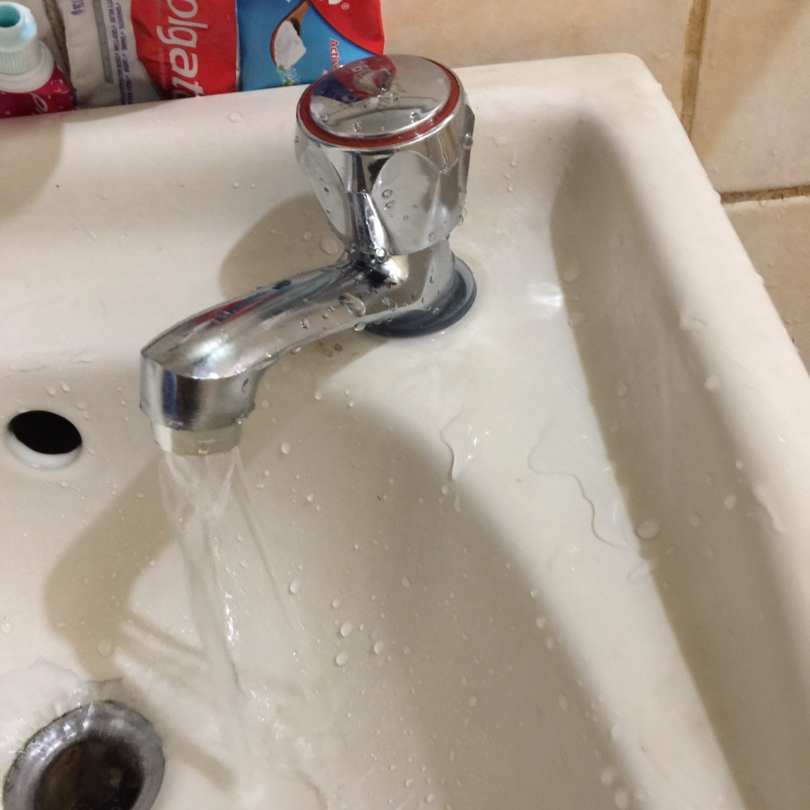How do you actually feel on the subject of Leaky Faucets: Why They Happen & What to Do About Them?

Dripping taps might appear like a small hassle, yet their influence surpasses just the aggravation of the sound. From wasting water to incurring unnecessary economic prices and wellness risks, disregarding a dripping tap can cause various repercussions. In this post, we'll look into why it's important to address this usual family issue promptly and efficiently.
Waste of Water
Ecological Impact
Dripping faucets contribute substantially to water wastefulness. According to the Environmental Protection Agency (EPA), a single faucet leaking at one drip per secondly can lose more than 3,000 gallons of water annually. This not only stress water resources yet likewise influences communities and wild animals depending on them.
Step-by-Step Guide to Repairing a Dripping Tap
Devices Required
Before attempting to take care of a dripping tap, collect the necessary tools, consisting of a flexible wrench, screwdrivers, replacement parts (such as washing machines or cartridges), and plumber's tape.
Usual Tap Issues and Their Solutions
Identify the kind of faucet and the certain concern causing the drip. Typical issues consist of worn-out washers, rusty valve seats, or malfunctioning O-rings. Refer to supplier instructions or on-line tutorials for detailed advice on repairs.
Financial Prices
Raised Water Expenses
Beyond the environmental effect, leaking faucets can blow up water costs considerably. The collected waste in time translates right into higher utility expenditures, which can have been avoided with prompt repair services.
Prospective Building Damages
Additionally, extended leaking can result in harm to fixtures and surfaces surrounding the faucet. Water buildup can trigger staining, deterioration, and even architectural concerns if left unattended, resulting in extra repair costs.
Health and wellness Worries
Mold and Mold Development
The continuous presence of wetness from a trickling tap creates an excellent setting for mold and mildew growth. These fungi not only endanger interior air high quality yet likewise pose health dangers, particularly for people with breathing problems or allergies.
Waterborne Illness
Stationary water in dripping faucets can come to be a breeding ground for bacteria and other microorganisms, raising the risk of waterborne diseases. Pollutants such as Legionella germs grow in stationary water, possibly leading to major diseases when ingested or inhaled.
Do it yourself vs. Specialist Fixing
Pros and Cons of DIY Repair
While some might try to take care of a leaking tap themselves, DIY fixings include their own set of obstacles. Without appropriate expertise and tools, DIY efforts can intensify the issue or cause incomplete fixings, extending the problem.
Advantages of Hiring an Expert Plumber
Hiring an expert plumber ensures that the underlying cause of the trickling faucet is dealt with properly. Plumbing technicians have the knowledge and tools to detect and repair faucet problems effectively, conserving time and lessening the threat of further damage.
Ecological Responsibility
Specific Contribution to Conservation
Taking obligation for repairing trickling taps straightens with more comprehensive initiatives towards water preservation and ecological sustainability. Every person's activities jointly make a considerable effect on protecting precious sources.
Lasting Living Practices
By prioritizing timely repair work and adopting water-saving routines, people contribute to sustainable living practices that profit both existing and future generations.
Safety nets
Routine Upkeep Tips
To stop leaking taps, do regular upkeep such as cleansing aerators, evaluating for leakages, and replacing damaged parts promptly. Furthermore, take into consideration setting up water-saving tools or updating to much more effective components.
Relevance of Prompt Repairs
Resolving dripping taps as quickly as they're observed avoids additional water waste and potential damage, inevitably saving both water and money over time.
Impact on Home Worth
Understanding of Well-Maintained Residential Property
Keeping a residential property in good condition, including resolving maintenance issues like trickling faucets, boosts its regarded value and charm amongst prospective customers or renters.
Impact on Resale Worth
Characteristics with well-maintained plumbing fixtures, including taps, command greater resale worths in the realty market. Resolving trickling taps can add to a positive impact during residential property examinations and negotiations.
Verdict
Dealing with a leaking tap exceeds plain benefit; it's an essential step towards saving water, decreasing financial expenses, and securing health and wellness and residential or commercial property. Whether with DIY fixings or specialist assistance, taking action to repair leaking taps is a tiny yet impactful way to promote liable stewardship of sources and contribute to a healthier, extra sustainable future.
How to Fix a Leaky Faucet: Step-by-Step Repair Guide
A leaky faucet may seem like a simple annoyance, but if it's not fixed promptly, that leak could cost hundreds to potentially thousands. From water damage to mold, mildew, and high water bills, even a tiny leak can be catastrophic if left unattended. Damage like this can even affect the overall value of your home, so it's important to take the right approach for leaky faucet repair. You may need the help of a plumber in some cases, but we've got a few tips you can try on how to fix a leaky faucet before calling the pros.
Four Faucet Types
When you're learning how to fix a leaky faucet, the first step is knowing what kind of faucet you're working with! There are four common types.
Cartridge Faucets
Cartridge faucets come in one- or two-handled varieties. In one-handled cartridge faucets, hot and cold water combines in a single cartridge. In the two-handled versions, hot and cold water are controlled separately and mixed in the faucet.
Ball Faucets
Ball faucets have a single lever you push up and down to adjust the pressure and rotate to change the temperature. A slotted metal ball controls the amount of water allowed into the spout.
Compression Washer Faucets
They're the oldest type of faucet, but they're still used in many homes — especially older ones. Compression faucets have two separate handles that, when turned, raise or lower the washer that seals a water valve. This valve stops water from flowing through the faucet when it is turned off.
Disc Faucets
Disc faucets rarely need to be repaired due to their maintenance-free design. The water flow is controlled by two discs — the upper one raises and lowers against a fixed lower disc, creating a watertight seal. If your disc faucet starts leaking, you may need to replace the seals or clean residue buildup from the inlets.
Fixing a Leaky Faucet
Step 1: Turn Off the Water
Whether you're learning how to fix a leaky bathtub faucet or how to fix a leaky kitchen faucet, always turn off the water supply to your working area when you're fixing a leak. The last thing you want is a flood added to your list of things to fix.
Look for the shutoff valves below your sink or around the tub and turn them clockwise to stop the water flow. If your faucet doesn't have shutoff valves, you may need to turn off the water for the whole house. Check to make sure it's off by turning the faucet on. If nothing comes out, you're ready to start the repair.
Step 2: Take Apart the Faucet
How you disassemble your faucet depends on the type of fixture you have. You can use a flathead screwdriver to remove the caps on top of the handle or handles for cartridge and compression faucets. Inside, you should see handle screws. Unscrew these with a screwdriver to remove the handle.
Disc- and ball-style faucets will typically have an inlet screw near the handle, and removing that will reveal the interior of the faucet.
Detach the Valve Stem
For cartridge- and compression-style faucets, you'll see the inner valve stem or cartridge once you remove the faucet handles. If you have a compression faucet, unscrew the brass valve stem. If you have a cartridge faucet, pull out the cartridge. If your cartridge has been in place for a while, it may require some tools or extra force to remove it due to mineral deposits.
Examine and Replace Parts
Once you've removed the parts, check them out to confirm what needs to be replaced. You may see corroded rubber washers, O-rings, stems, or cartridges. On a ball-style faucet, check the seats and springs for damage.
If you need to repair a leaky disc faucet, check the inlet and seals on the lower disc.
Once you determine what parts must be replaced, visit your local hardware store. Bring the damaged parts with you to ensure you can purchase the correct components to replace them.
Clean Valves and Faucet Cavity
If you've removed a stem or cartridge, you may notice mineral buildup in the faucet's threads. Use white vinegar to clean the valve seat by soaking it for a few minutes, then scrub it away with a soft toothbrush and rinse with warm water. You can also clean the interior of the faucet in the same way.
Reassemble the Faucet
Once your faucet is cleaned and the required parts have been replaced, it's time to reassemble it. Put the pieces back together and slowly turn the water supply back on. Doing this slowly is crucial because too much initial water pressure can damage the new hardware you've just installed.
https://homewarranty.firstam.com/blog/how-to-fix-leaky-faucet

As a serious person who reads about Should I Repair or Replace a Leaky Faucet?, I thought sharing that post was a great idea. Are you aware of another person who is involved in the niche? Do not hesitate to promote it. I thank you for reading our article about Why Are My Faucets Dripping (And Can I Fix It Myself)?.